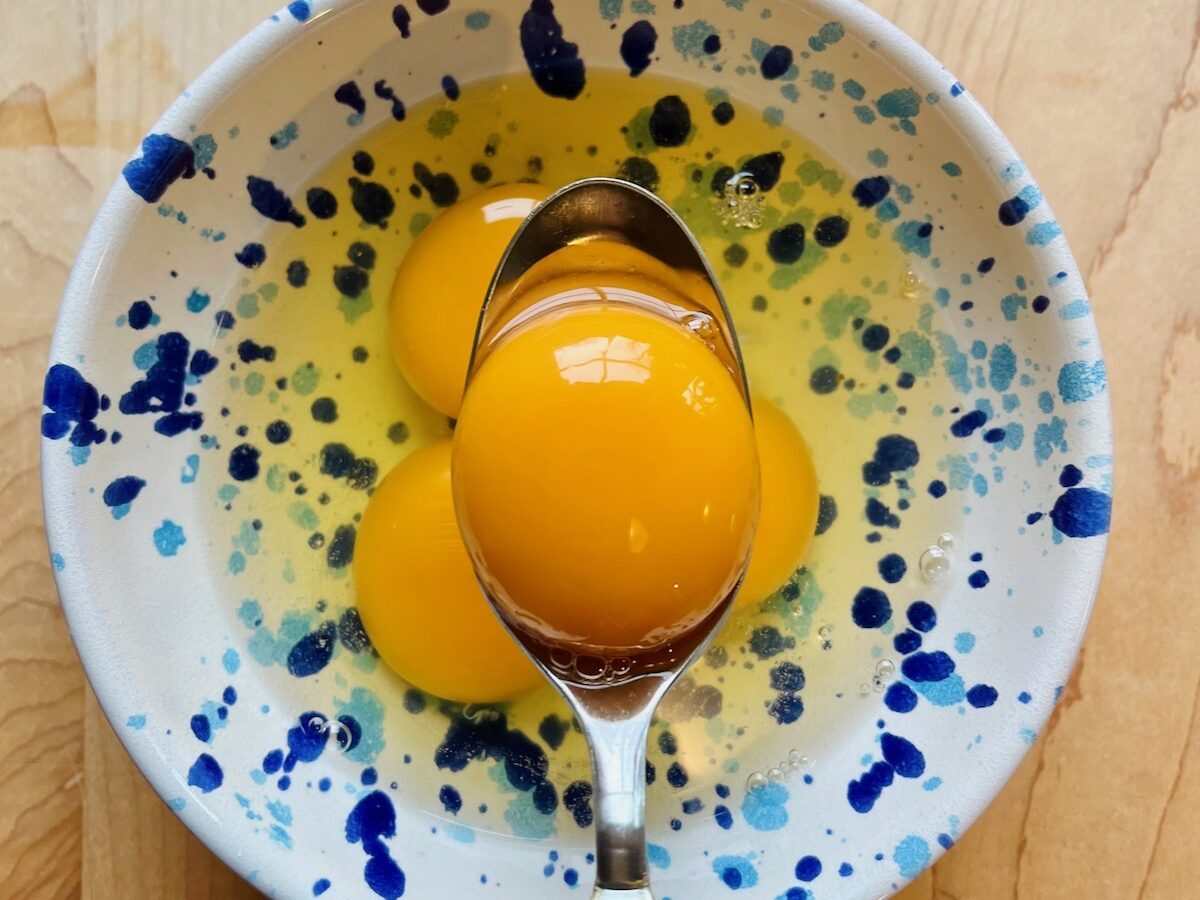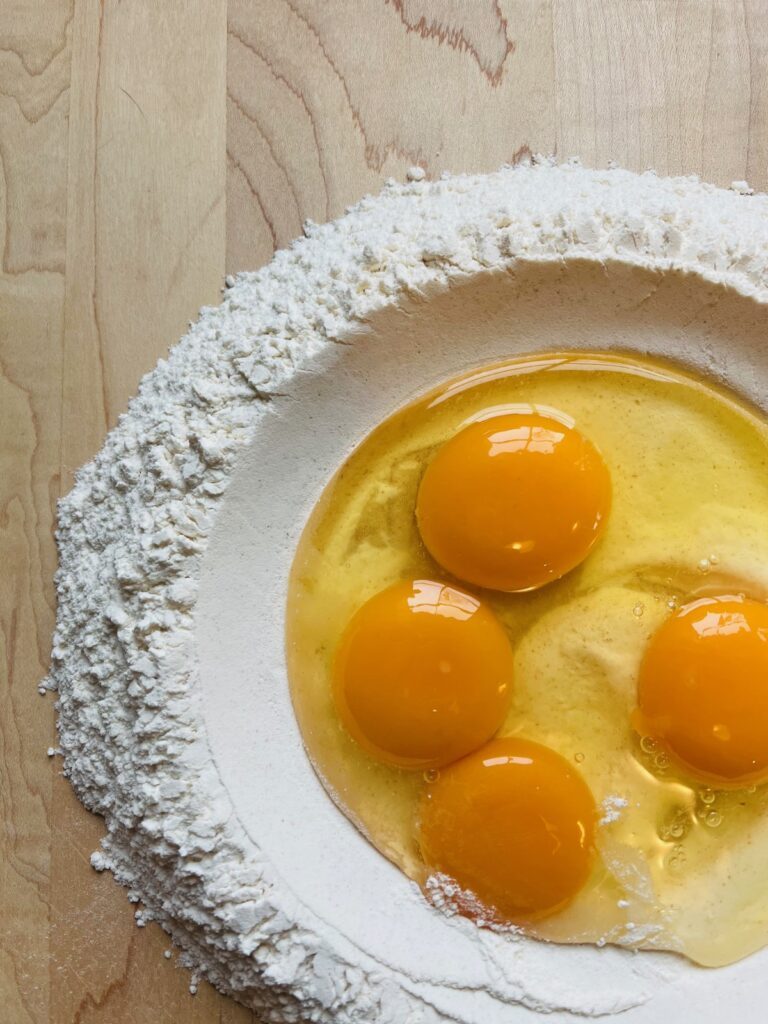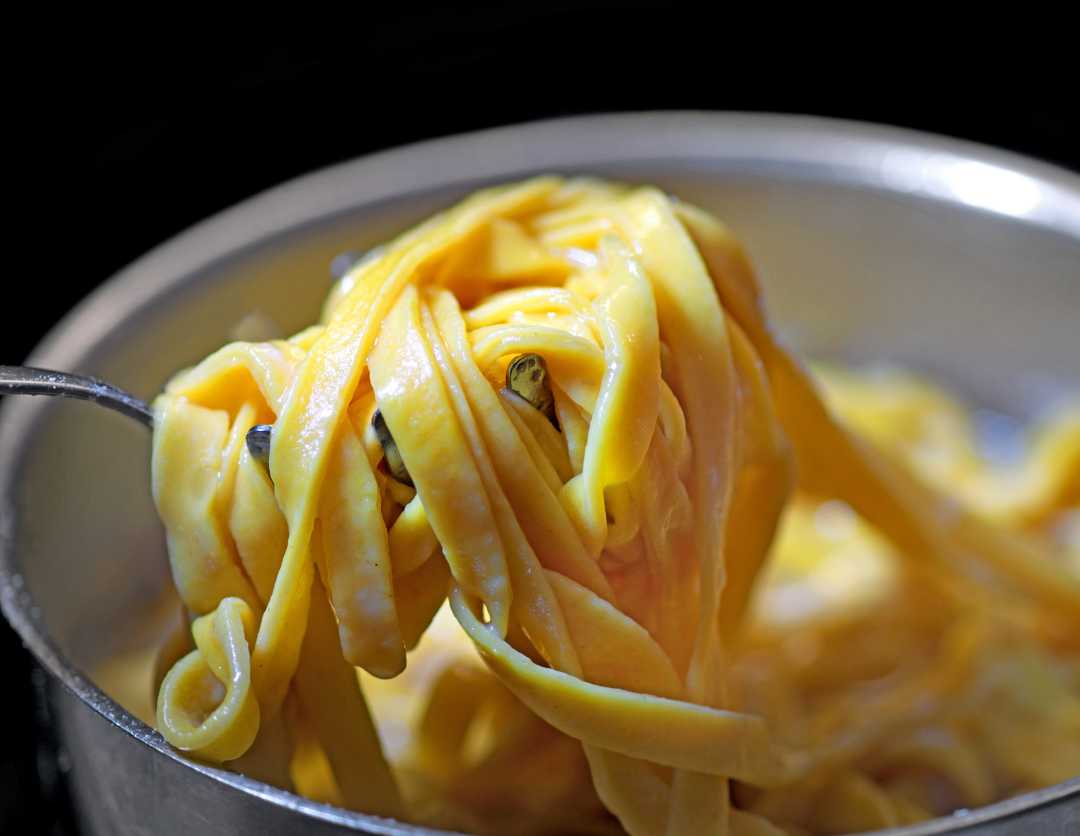
The Science Behind the Eggs in Your Pasta
Written by Sarah Ubertaccio
Making pasta dough is, well, tricky.
Even though there are only two ingredients (flour and water or flour and eggs), the list of nuances within these ingredients is long.
You probably know by now that the flour used in pasta dough isn’t just any old flour. It’s typically a special type of pasta flour, either Italian type ‘00’ flour or semolina flour. Pasta flour is something that is talked about often because it’s a rather mysterious ingredient for us non-Italians. In fact, our Guide to Italian Flour is one of our most popular articles on qbcucina.com!
But what we don’t often learn about is the other very important ingredient: eggs. Although eggs are a standard commodity we all know well and shop for every week, keep reading to see why they should be carefully considered when it comes to your precious impasto.
I find this topic fascinating because I didn’t know that much about eggs until I started making pasta on a regular basis. As a self-taught pasta maker, I’ve picked up various tidbits of information over the years that fall under what I like to call “pasta dough science” – how flour and eggs interact together on a more molecular level. And what a difference that made! Once I understood the “science” behind eggs, my pasta improved because I was finally able to understand just exactly what they were doing to my dough.
Through the years of practicing and teaching pasta making, I’ve boiled down my egg wisdom into a few main lessons that I think are important for every pasta maker to understand. So without further ado, let’s crack into them!
Lesson #1: Not all eggs weigh the same.
You’re likely already familiar with the classic Italian fresh egg pasta recipe which goes something like this: for every person, mix 100 grams of flour with 1 whole egg. This is, in fact, what most Italians follow. It’s a good approximation but I have beef with it for a couple of reasons.
For one, not all eggs weigh the same. The average large egg weighs 55 grams (without the shell), but this weight can vary anywhere between 46 grams to 60 grams. That’s a significant difference! If you’re using 100 grams of flour with an egg that weighs 46 grams, your dough will be dry and may not come together easily. On the other hand, if your eggs are on the larger side, your dough may feel too wet and sticky. This can be extremely frustrating for beginners who are relying on a written recipe to guide them.
This brings me to the second point on why I don’t like the 100-grams-to-1-egg recipe. You know most of those pasta grannies that you see on YouTube? They have been making pasta their whole life. They know exactly how the dough should feel. They often don’t measure because they have the experience to know when they need to add more or less flour, or use more eggs. If you make enough pasta, you’ll eventually understand how it should feel, but in the beginning, you have no reference point.
So what should you do? I recommend using a kitchen scale to weigh out both your flour and your eggs. You want to aim for a 55-57% hydration level. In other words, if you’re using 100 grams of flour, you’ll need 55-57 grams of eggs. For a batch of pasta dough that serves four people, you’d use 400 grams of flour and about 220-228 grams of eggs.
The hydration level can vary depending on the type of pasta you are making. Ravioli or any pasta that needs to bend, fold, and seal will be better off at higher hydration, which will give it more flexibility. On the other hand, if you’re planning on making something like tagliatelle or spaghetti all chitarra, you’ll want a slightly drier dough that will keep it from sticking to the pasta machine or chitarra.
There is one caveat to this recipe, though (you didn’t think it’d be this easy, did you?). And it has to do with which part of the egg you are using!
Lesson #2: Egg yolks and egg whites do different things.
Back when I first learned how to make pasta, I read through countless pasta cookbooks and recipes for classic egg doughs. I noticed that some recipes would say to use only whole eggs, while others recommended a mixture of whole eggs and egg yolks, and still, others would use only egg yolks. “What the heck?!” I thought. Why is there so much variation for such a simple recipe?
I later learned through Thomas McNaughton’s Flour + Water cookbook that egg yolks and egg whites do different things to your homemade pasta. In reality, we should be treating yolks and whites almost like two separate ingredients!
Egg whites are 90% water (the other 10% is protein). Whites hydrate the flour and in return, give your finished pasta plasticity – the ability to bend and fold, which is particularly important for shapes that need a lot of bending and folding.
On the other hand, egg yolks are 48% water, 17% protein, 33% fat, and 2% carbohydrate. Yolks are rich in color and full of nutrients. This helps give your dough a silky texture, gorgeous yellow color, and rich taste.
To make great pasta, you need a combination of both. A dough made with all egg whites will be super gummy and gluey. A dough made with all egg yolks won’t have as much bend or plasticity (and you’ll need a TON of egg yolks to achieve the right hydration level). You can make an all-yolk dough (which is delicious) but it’s best for ribbon shapes like tajarin and tagliatelle since they don’t require a lot of bending or folding. (By the way, you can use those leftover egg whites to make amaretti!)
For most pasta shapes, I like to use a combination of whole eggs and egg yolks, usually around 2 whole eggs and 3 egg yolks for every 400 grams of flour. I find that this combination offers the best of both worlds: you get a well-hydrated dough that can fold easily thanks to the egg whites from the whole eggs while also achieving a rich color and taste from the additional egg yolks. I’ll typically save the leftover egg whites for tomorrow’s omelet or whisk it in my oatmeal in the morning for an added protein boost and creamy texture.

Lesson #3: Room temp eggs are best.
In Italy, eggs are sold and stored at room temperature. Without getting into too many details, this has to do with the fact that Italian eggs aren’t washed before they are sold at the market Unwashed eggs maintain a natural protective coating on them which prevents bacteria from entering the egg.
Here in the U.S., it’s a different story. Our eggs are washed before they make it to the supermarket, and therefore they need to be stored in the fridge to prevent bacterial infections. It all sounds kind of backward if you ask me but hey, I didn’t make the rules!
With that said, it’s important to bring your eggs up to room temperature before making pasta. Cold eggs will freeze up your dough and it won’t knead as easily. In general, pasta dough likes to be warm (room temperature) so make sure your flour, eggs and/or water are all at an ambient temp before mixing.
Lesson #4: Quality eggs make a difference.
It probably goes without saying, but fresh, high-quality eggs will give you tastier results. Since fresh egg pasta has only two ingredients (flour and eggs), you want to use the best of each that you can find.
How do you know if your eggs are fresh?
Here’s a quick test: crack an egg into a bowl, leaving it intact. If the egg yolk is flat and pale and the egg whites seem loose and watery, it’s probably not the freshest egg. Fresh eggs have plump yolks that are rich in color and thick egg whites that hold their shape.
As for choosing quality eggs, you’ll have to do a bit of research on what’s available to you in your area. Organic, pasture-raised eggs tend to be better quality, but you might also find that eggs from your local farmer or chicken-raising neighbors are just as good, if not even better. Try experimenting with different brands to see what you like!
Some folks will even feed their hens red peppers to help turn their egg yolks orange, which will give the pasta dough an even richer golden color. So far, I haven’t found any evidence that says oranger egg yolks are better for pasta dough, but there’s certainly no harm in aiming for it. I have noticed that on average better-quality eggs tend to have more orange yolks, but I’m not sure if this is simply companies trying to market to the belief that “orange yolks” are better for you.
Now that you’ve got the science down, why not take another crack at your fresh egg pasta dough? After all, practice makes perfect.
Post a Comment
You must be logged in to post a comment.




